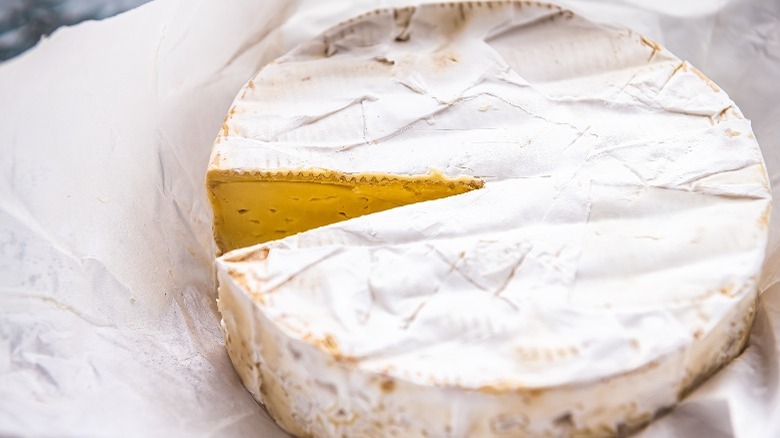How Long Is Brie Good For After Opening?
Rich, buttery brie is the ideal creamy cheese for baking in the oven with apple cranberry relishy, enjoying alongside the perfect brie accompaniments, or oozing from between the charred toast of a crisp panini. But once you open the package, the shelf life of this melt-in-your-mouth indulgence is considerably shortened. That's because soft cheeses like brie have a high moisture content, and water activity is one of the key factors in bacterial growth and spoilage.
The U.S. Department of Agriculture says brie stays good for a week, though many cheese purveyors say you have up to two weeks if it's properly stored. The discrepancy is due to the USDA's notorious (and wise) tendency to err on the side of caution. But both food waste and foodborne illness being the antithetical scourges they are, it's crucial to know how to spot brie that's past its prime.
Spoiled brie develops off-putting flavors and textures. While the white rind is itself a type of edible mold, brie can also develop mold beyond that, which isn't safe to eat. Bad brie may also become softer and grainy and develop an unpleasant ammonia-like odor. If you notice any of those signs, it's best to toss the brie and try to get to it faster next time.
Extending brie's freshness
Protecting your brie from external contaminants is good, but the living things that make cheese so tasty need to breathe. Wrap it in parchment paper, butcher paper, or specialized cheese paper and pop it into a plastic zip-close bag. That way, the cheese is shielded from excess moisture and contaminants without suffocating. Proper storage also ensures any new flavors the cheese develops are the result of aging rather than off flavors from exposure to other foods.
Store the cheese in the refrigerator in a spot with a stable temperature (so avoid the doors) that's not too cold. That's usually the top or middle shelf in the front, potentially a deli drawer. The overall fridge temperature should be between 35 and 38 degrees Fahrenheit (that's 2 or 3 degrees Celsius) for optimal food safety.
When handling brie, always use clean utensils. While brie tastes best warm or at room temperature, it's best to get any leftovers back in the fridge sooner than later. Or better yet, only pull out what you can eat in one sitting. Soft cheeses can be a little finicky compared to harder cheeses, but the rich flavor and dreamy texture of brie is worth it.

